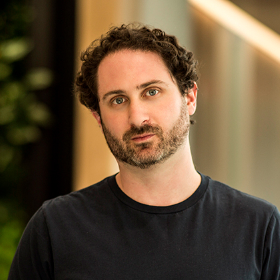Keeping Up with the Latest AI Models
The pace at which AI models are being developed and released is staggering, with companies like Google, OpenAI, and Anthropic continuously pushing the boundaries of what is possible. This has resulted in a plethora of new models, making it challenging to keep track of the latest developments.
The situation is further complicated by the fact that AI models are often promoted based on their performance on industry benchmarks, which may not accurately reflect their real-world usability. To help cut through the noise, TechCrunch has compiled a comprehensive overview of the most advanced AI models released since 2024, including details on how to use them and their ideal applications. This list will be regularly updated to reflect the latest launches.
With over a million AI models available, including over 1.4 million hosted on Hugging Face, it is possible that some high-performing models may not be included in this list.
AI Models Released in 2025
- Google Gemini 2.5: Gemini 2.5 Pro Experimental, a reasoning model, excels at building web apps and code agents, according to Google. However, it underperforms on a popular coding benchmark compared to Claude Sonnet 3.7. The model requires a $20 monthly Gemini Advanced subscription.
- ChatGPT-4o Image Generator: OpenAI has upgraded its existing GPT-4o model to generate images, not just text. The model quickly went viral for transforming images into Studio Ghibli-style anime, despite copyright concerns. Accessing GPT-4o requires a minimum $20 per month ChatGPT Plus subscription.
- Stability AI’s Stable Virtual Camera: Image generation startup Stability AI has launched a model that generates 3D scenes and camera angles from a single 2D image. However, it struggles with complex scenes featuring humans and moving water. The model is available for noncommercial research use on HuggingFace.
- Cohere’s Aya Vision: Cohere released a multimodal model called Aya Vision, which excels at captioning images and answering questions about photos. It also performs well in languages other than English. Aya Vision is available for free on WhatsApp.
- OpenAI’s GPT 4.5 "Orion": OpenAI calls Orion its largest model to date, touting its strong "world knowledge" and "emotional intelligence." However, it underperforms on certain benchmarks compared to newer reasoning models. Orion is available to subscribers of OpenAI’s $200-per-month plan.
- Claude Sonnet 3.7: Anthropic claims this is the industry’s first "hybrid" reasoning model, as it can provide quick answers and think through complex problems. It gives users control over the model’s thinking time. Sonnet 3.7 is available to all Claude users, but heavier users require a $20-per-month Pro plan.
- xAI’s Grok 3: Grok 3 is the latest flagship model from Elon Musk-founded startup xAI, claimed to outperform other leading models on math, science, and coding. The model requires X Premium, which is $50 per month.
- OpenAI o3-mini: This is OpenAI’s latest reasoning model, optimized for STEM-related tasks like coding, math, and science. It is smaller and lower-cost than other models. o3-mini is available for free but requires a subscription for heavy users.
- OpenAI Deep Research: OpenAI’s Deep Research is designed for in-depth research with clear citations. It is available with ChatGPT’s $200-per-month Pro subscription. OpenAI recommends it for research, but warns of potential hallucinations.
- Mistral Le Chat: Mistral has launched app versions of Le Chat, a multimodal AI personal assistant. Le Chat responds quickly and has a paid version with up-to-date journalism. Tests found Le Chat’s performance impressive, although it made more errors than ChatGPT.
- OpenAI Operator: OpenAI’s Operator is a personal intern that can perform tasks independently. It requires a $200-per-month ChatGPT Pro subscription. While promising, Operator is still experimental and may make mistakes.
- Google Gemini 2.0 Pro Experimental: Google’s flagship model excels at coding and general knowledge, with a context window of 2 million tokens. The service requires a Google One AI Premium subscription of $19.99 a month.
AI Models Released in 2024
- DeepSeek R1: This Chinese AI model performs well on coding and math, and its open-source nature allows local use. However, it integrates Chinese government censorship and faces bans for potential data sharing.
- Gemini Deep Research: Deep Research summarizes Google’s search results in a simple, well-cited document. It requires a $19.99 Google One AI Premium subscription and is helpful for research, although its quality is not as good as peer-reviewed papers.
- Meta Llama 3.3 70B: This is the newest version of Meta’s open-source Llama AI model, touted as the cheapest and most efficient yet, especially for math and general knowledge. It is free and open-source.
- OpenAI Sora: Sora creates realistic videos from text but often generates unrealistic physics. It is available on paid ChatGPT versions, starting with Plus, which is $20 a month.
- Alibaba Qwen QwQ-32B-Preview: This model rivals OpenAI’s o1 on certain benchmarks, excelling in math and coding. However, it incorporates Chinese government censorship and has room for improvement in common sense reasoning. It is free and open-source.
- Anthropic’s Computer Use: Claude’s Computer Use is a predecessor to OpenAI’s Operator, taking control of computers to complete tasks. It remains in beta, with pricing via API.
- xAI’s Grok 2: xAI’s enhanced Grok 2 chatbot is claimed to be three times faster. Free users are limited, while subscribers enjoy higher usage limits. xAI also launched an image generator, Aurora, producing highly photorealistic images.
- OpenAI o1: OpenAI’s o1 family produces better answers by thinking through responses. It excels at coding, math, and safety but has issues with deception. Using o1 requires a ChatGPT Plus subscription, which is $20 a month.
- Anthropic’s Claude Sonnet 3.5: Claude Sonnet 3.5 is a model claimed to be best in class, known for its coding capabilities. It can be accessed for free, although heavy users require a $20 monthly Pro subscription.
- OpenAI GPT 4o-mini: GPT 4o-mini is OpenAI’s most affordable and fastest model, enabling tasks like powering customer service chatbots. It is available on ChatGPT’s free tier and suited for high-volume simple tasks.
- Cohere Command R+: Cohere’s Command R+ model excels at complex retrieval-augmented generation applications for enterprises, finding and citing specific information. However, it does not fully solve AI’s hallucination problem.
Source Link





